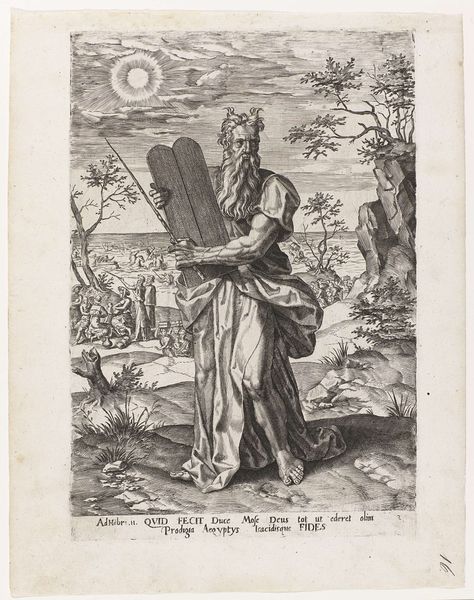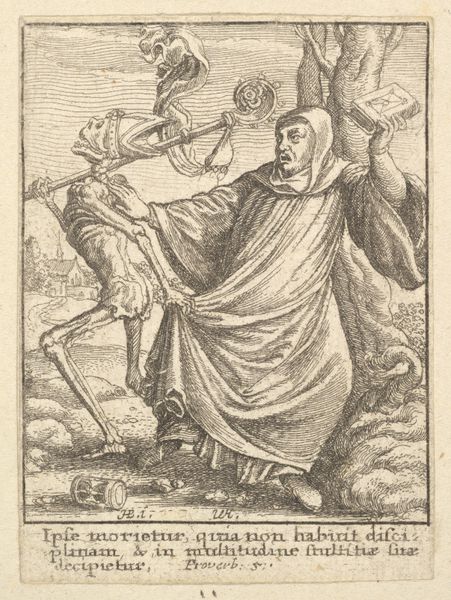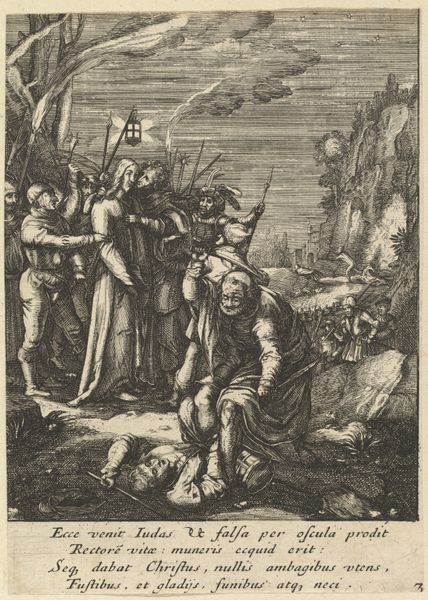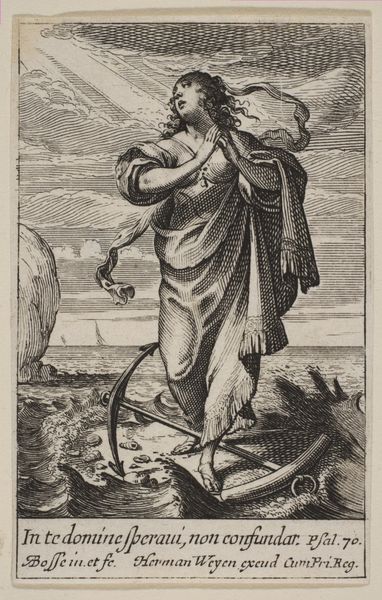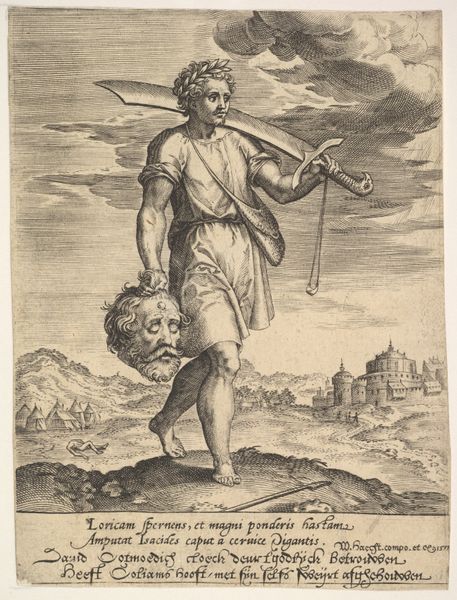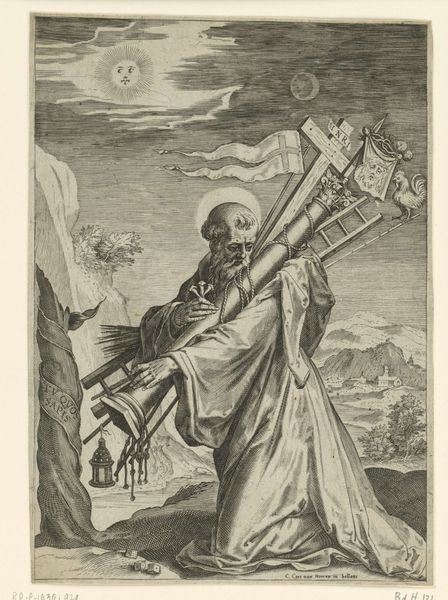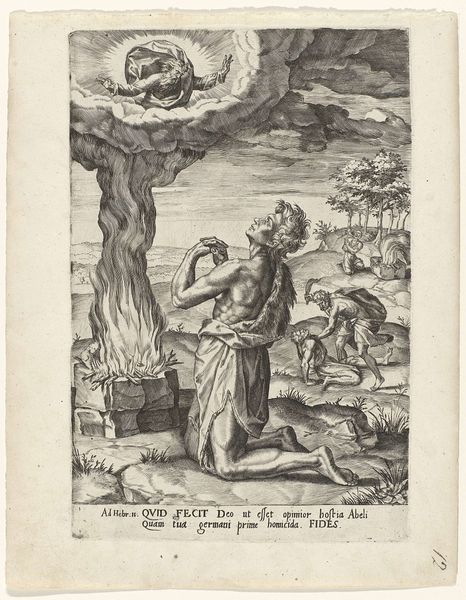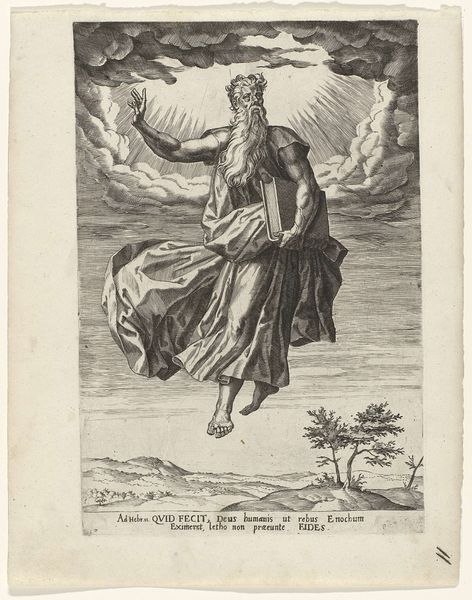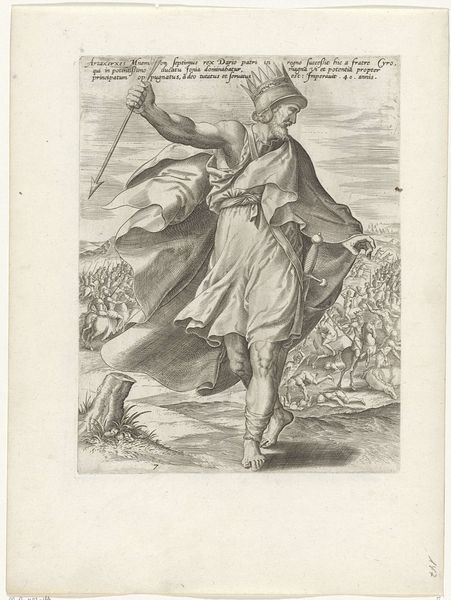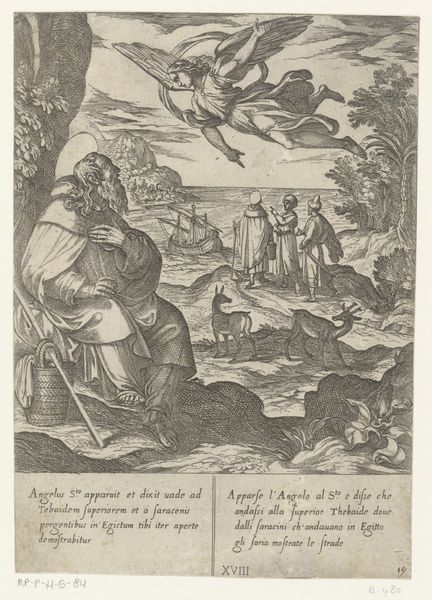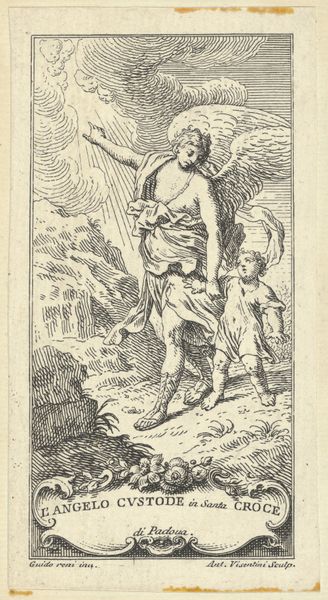
print, etching, engraving
# print
#
etching
#
landscape
#
figuration
#
form
#
line
#
history-painting
#
academic-art
#
engraving
Dimensions: height 293 mm, width 199 mm
Copyright: Rijks Museum: Open Domain
Curator: Before us, we have "The Calling of Abraham," an engraving made sometime between 1550 and 1625. It’s currently held in the Rijksmuseum, and is attributed to Pieter Jalhea Furnius. Editor: The immediate impression is of movement and authority. Abraham strides forward, his hand raised in a gesture that’s both commanding and, perhaps, pleading. There’s a wind catching his cloak, and the landscape seems to unfurl behind him, almost like he's being pushed along. Curator: It's crucial to consider the socio-political implications inherent in representing a biblical figure during this period. The Reformation was in full swing; images were powerful tools, and the depiction of Abraham – a patriarch, a symbol of faith and obedience – served specific ideological purposes. Whose Abraham is this? What did this mean to the early modern viewers? Editor: I agree. Beyond the politics, consider the visual cues—God appears in a cloud, radiant. This rendering conforms to conventional Renaissance and Early Modern symbology to render visible that which is, by definition, beyond our sight. An angel seems to wave to Abraham with God. Are they encouraging him? Ordering him? There's ambiguity. Curator: And how does the figure of Abraham function within systems of power and oppression? Whose voices and narratives are being marginalized or erased by this singular focus on the patriarch? It's not simply about blind faith, but about challenging those structures, about deconstructing the very foundations upon which these narratives are built. The implications of this act—choosing god over homeland—sets into motion centuries of conflicts. Editor: Yes, the decision of abandoning one place over another speaks profoundly to questions of loyalty and devotion. How are such symbols utilized? This single scene encodes, at least for some, the genesis of a whole people and the very personal decision of setting forth on a spiritual journey to search of the promised land. Curator: Looking at the complete scene, with its precise lines and careful composition, it’s tempting to view it as a static object of historical interest. But we need to breathe life into it by situating it within broader conversations about identity, faith, and power. Editor: It’s a fascinating exercise to delve into the layers of symbolism—decoding what might have been so obvious and emotionally charged centuries ago. Curator: Precisely, let us ask critical questions that matter today, not just then. Editor: And perhaps it all comes down to individual interpretations of devotion.
Comments
No comments
Be the first to comment and join the conversation on the ultimate creative platform.
